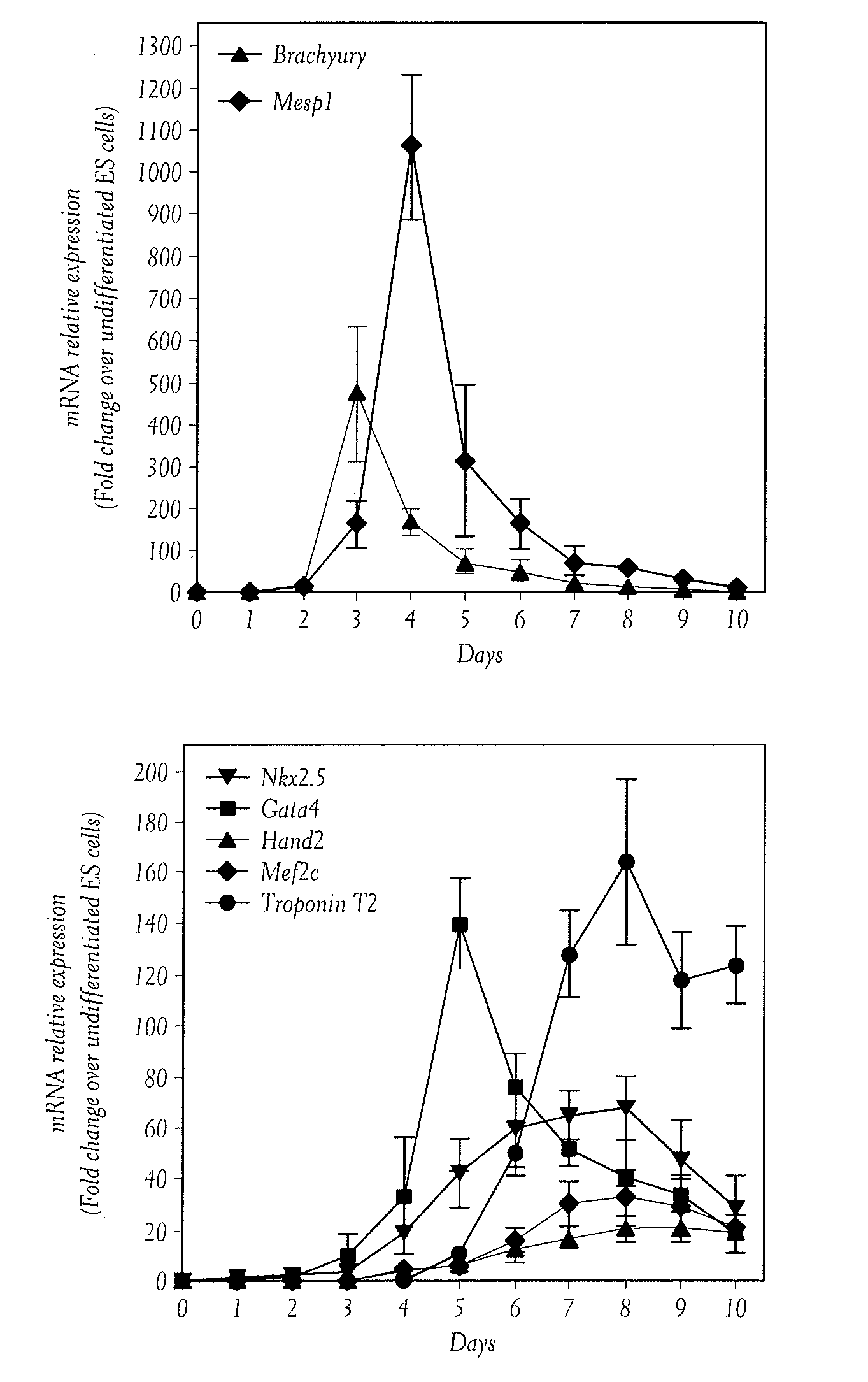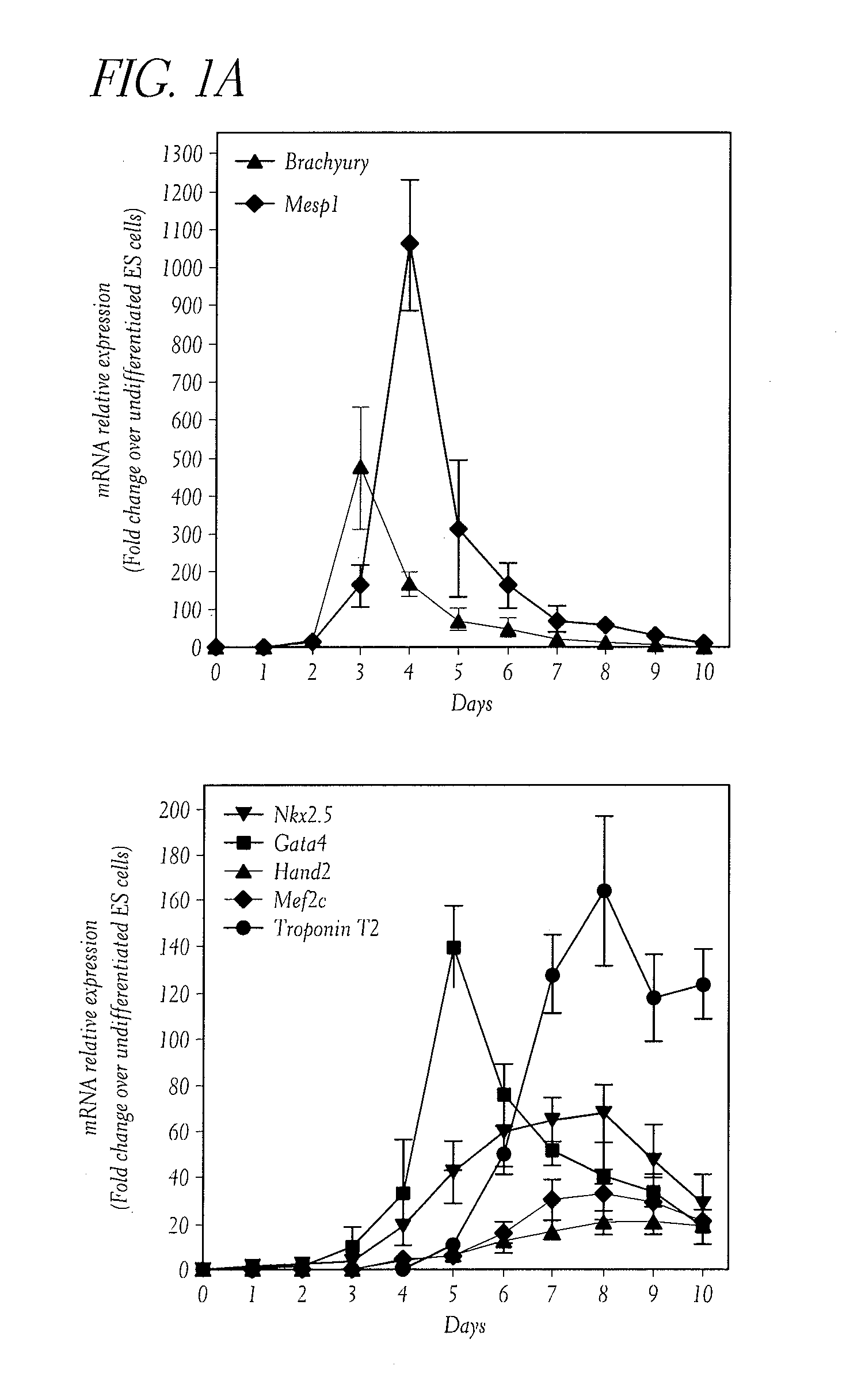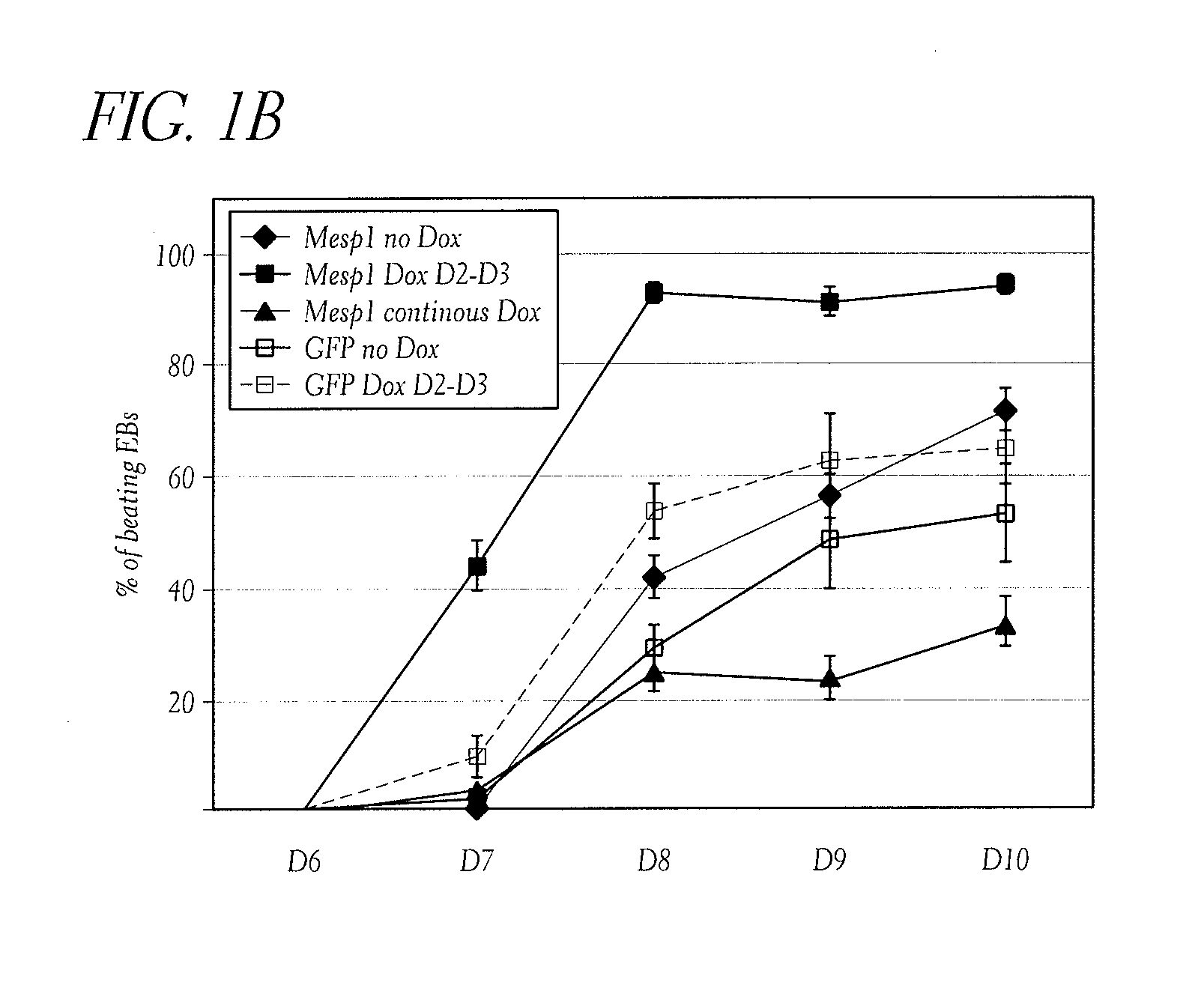Mesp1 as a master regulator of multipotent cardiovascular progenitor specification and uses thereof
a multi-potent cardiovascular and progenitor technology, applied in the field of stem cell control, can solve the problems of low global low clinical usefulness and reproducibility, and low efficiency of cardiac differentiation using the previously described methods, so as to improve cardiac regeneration, promote the specification of mcp and their specification, and promote cardiac progenitor generation high-efficiency
- Summary
- Abstract
- Description
- Claims
- Application Information
AI Technical Summary
Benefits of technology
Problems solved by technology
Method used
Image
Examples
example 1
Transient Expression of Mesp1 Dramatically Accelerates and Increases Cardiac Differentiation from ES Cells
[0115]We first examined by RT-PCR the temporal expression of key transcription factors implicated in the transition from pluripotent ESC to cardiac terminal differentiation (FIG. 1A). When pluripotent ESCs are induced to differentiate, the temporal appearance of the key transcriptional factors implicated in mesoderm and cardiac commitment, is very similar to the temporal expression of these genes during embryonic development (Murry and Keller, 2008, Cell 132, 661-680). Genes regulating the specification of the primitive streak, such as Brachyury, are strongly and rapidly upregulated. Mesp1 began to be expressed soon after, peaks at day 4 (D4) and then was rapidly downregulated. Key cardiac transcription factors began to be expressed at D3-4, peaking around D6 while cardiac structural genes such as troponinT, began to be expressed at D5, peaked at D8 and their expression were mai...
example 2
Mesp1 Specifically Promotes the Specification of Multipotent Cardio-Vascular Progenitors from Primitive Mesoderm
[0116]During embryonic development or ESC differentiation, cardiac cells are thought to arise from the differentiation of MCPs (Murry and Keller, 2008, Cell 132, 661-680). To determine whether Mesp1 promotes the specification of MCPs or whether its effect is restricted only to the promotion of cardiac differentiation, we analyzed by RT-PCR and immuno-staining the expression of markers specific for the different mature cardiovascular cell types. Mesp1 increased the expression of cardiac transcription factors such as Nkx2-5, Gata4, Tbx5 or Tbx20, pan-cardiac markers (troponinT, Mf20 and aMHC) (FIGS. 2A, 1C and 9), ventriclar markers such as Myosin Light Chain 2v (Mlc2v) (FIGS. 2A and 2B), atrial markers such as MLC2a or atrial natriuretic factor (FIGS. 2A and 2C), as well as markers of pace maker cells such as the potassium channel Kcne1 (FIG. 2A). In addition to promoting m...
example 3
Mesp1 Specifies Multipotent Cardiovascular Progenitor Cell Fate by an Intrinsic and Cellular Autonomous Mechanism
[0117]Cell fate can be specified by extrinsic cues, such as the secretion of soluble proteins, by intrinsic cues, such as the expression of transcription factors, or by a combination of both mechanisms. We used different cellular assays to determine the cellular mechanisms by which Mesp1 promotes MCP specification. We first determined whether the addition of conditioned media (CM) from Mesp1 stimulated cells to control cells could recapitulate the cardiac promoting effect of Mesp1 expression (FIG. 3A). Unlike Mesp1 stimulated cells, the daily addition of CM from Mesp1 stimulated cells did not promote or accelerate cardiac differentiation in control cells (FIG. 3B), indicating that Mesp1 does not promote cardiovascular specification by the secretion of soluble proteins. To validate these observations, we also cocultured Mesp1-IRES-GFP EBs with EBs that expressed the red fl...
PUM
| Property | Measurement | Unit |
|---|---|---|
| concentration | aaaaa | aaaaa |
| volume | aaaaa | aaaaa |
| temperature | aaaaa | aaaaa |
Abstract
Description
Claims
Application Information
 Login to View More
Login to View More - R&D
- Intellectual Property
- Life Sciences
- Materials
- Tech Scout
- Unparalleled Data Quality
- Higher Quality Content
- 60% Fewer Hallucinations
Browse by: Latest US Patents, China's latest patents, Technical Efficacy Thesaurus, Application Domain, Technology Topic, Popular Technical Reports.
© 2025 PatSnap. All rights reserved.Legal|Privacy policy|Modern Slavery Act Transparency Statement|Sitemap|About US| Contact US: help@patsnap.com



